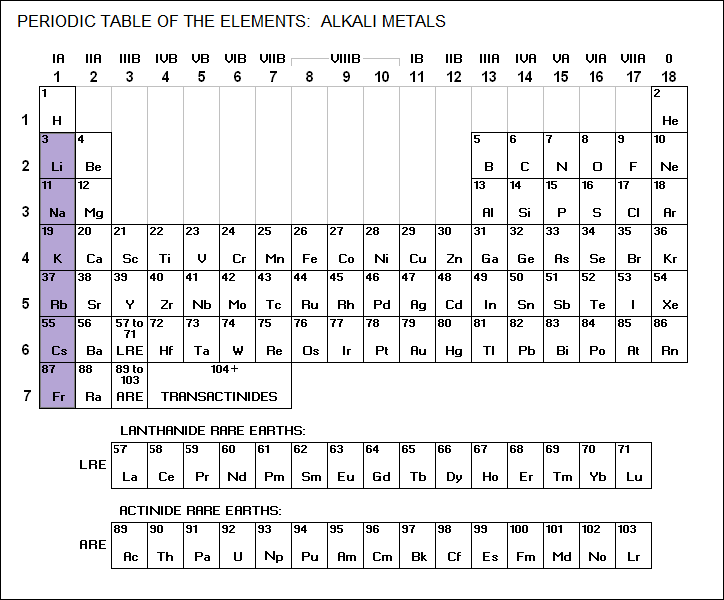
* Cesium and francium are members of the alkali metals family:

____________________________________________________________________
CESIUM / Cs / 55
A soft, shiny, gold-colored, very highly reactive metal. Except
for some transitory cesium isotopes associated with some decay
chains, all cesium found in nature consists of the stable
isotope Cs<133/55>.
atomic weight: 132.90545
abundance: 46th
density: 1.873 gm/cc
melting point: 28 C
boiling point: 669 C
valence: 1
____________________________________________________________________
Cesium, known as "caesium" outside the USA, is produced at the level of few tens of tonnes per year. It is used as a component in catalytic processes and in certain types of specialized glass. It was once used in ion rocket engines as a reaction mass, but has been generally displaced in that role by xenon.
Cesium iodide and cesium fluoride crystals are used as "scintillation detectors" in high-energy physics, since they absorb high energy radiation and emit light in response that can be picked up by photomultiplier tubes. Cesium is also the basis for highly accurate "atomic clocks" that monitor the line emission of cesium at a precise frequency, with these clocks accurate to 1 second in 300,000 years.
____________________________________________________________________
FRANCIUM / Fr / 87
Francium is such a radioactive metal that it cannot be synthesized
in bulk form. The longest-lived isotopes are Fr<223/87>, with a
half-life of 22 minutes, and Fr<212/87>, with a half-life of 20
minutes. It is so transient that it can't be used as a radioactive
tracer or for isotope power generation.
atomic weight: 223
abundance: negligible
density: ?
melting point: ~27 C
boiling point: ~680 C
valence: 1
____________________________________________________________________
